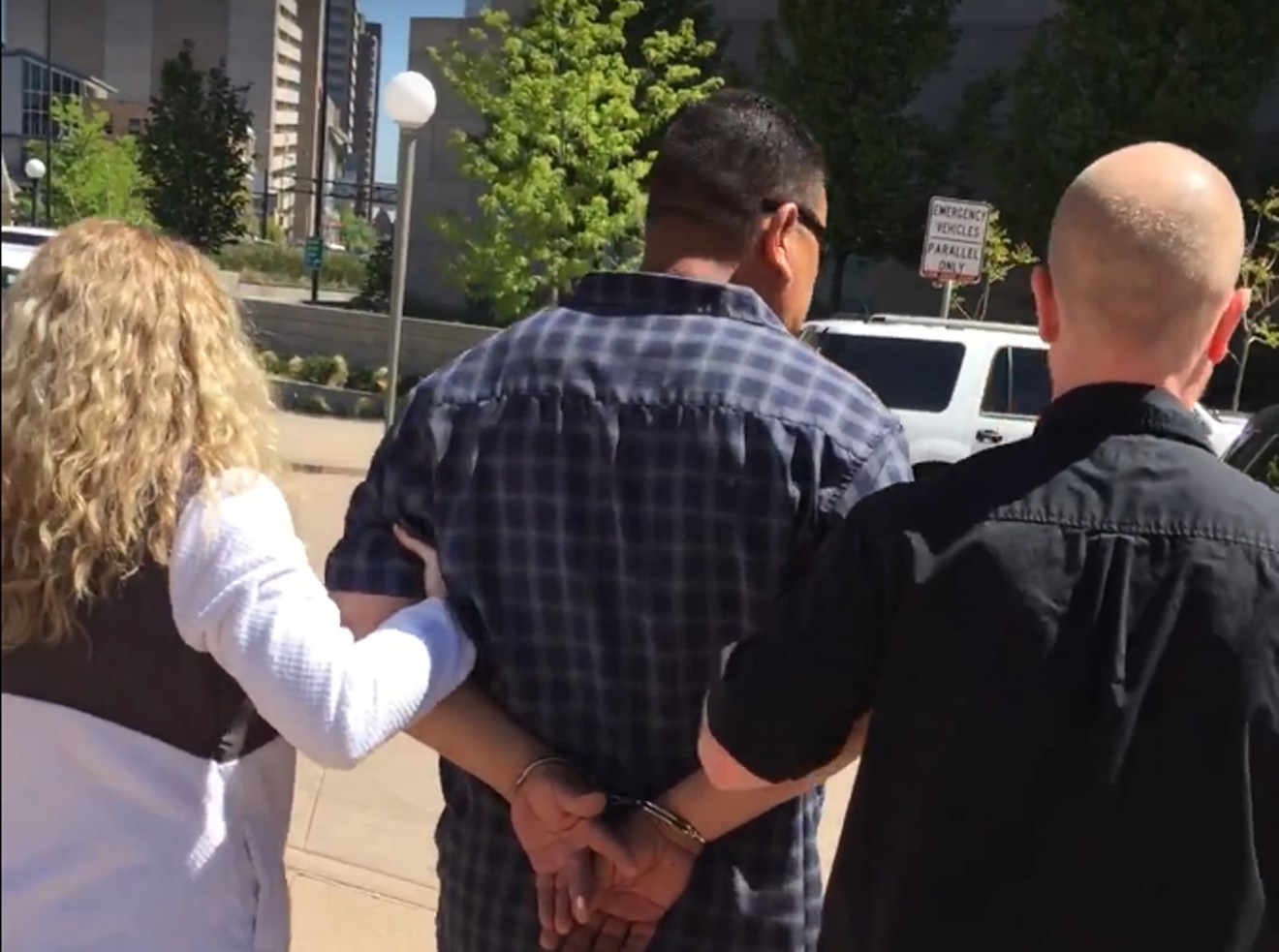Cities like Denver and powerful judicial voices, including the chief justices of California's and Oregon's supreme courts, have blasted ICE for piggybacking on court dates for non-immigration-related cases to make arrests. The concern is that the arrests undermine trust in the judiciary, and could prevent undocumented individuals from participating in trials out of fear. Denver prosecutors have already had to drop nine domestic-violence cases after witnesses refused to show up to the courthouse, citing concern over ICE agents stalking its hallways. A bulk of the media coverage has focused on individual arrests or on videos, such as those published by the Meyer Law Office in Denver — when the practice was first documented in Colorado.
Then we got our hands on some hard numbers from ICE.
As revealed in our September 21 cover story, "In the Balance," Westword obtained an arrest database from ICE through a Freedom of Information Act request.
The numbers of courthouse arrests were far higher than anyone — city officials included — realized: 31 courthouse arrests in Denver between October 2016 and early May 2017.
This piece presents some visual representations of that information; the interactive graphics below break down the data from ICE's arrest database. If you click or hover over the graphics, you can explore their data values and content.
The first chart (above) shows a month-by-month breakdown of courthouse arrests in Denver from October to May. Prior to Westword obtaining this data, the city had only anecdotal evidence of a handful of arrests – those captured on video by the Meyer Law Office.
Arrests by Offense Type
This timeline shows all 52 courthouse arrests that ICE conducted in Colorado between October 2016 and May 2017. Hovering over each dot reveals the time and location of the arrest, as well as details about the individual that was arrested.
Arrests by County
As the map shows, courthouse arrests occurred in three counties: Denver, Arapahoe and Jefferson. By hovering over each county, you can see how many courthouse arrests occurred there.
The graphic above breaks down courthouse arrests by offense type. The smaller, orange arc represents arrestees who were already convicted for felonies. The blue arc represents those with misdemeanor convictions or those who had been charged, but not convicted, for felonies at the time of their arrest by ICE. As our cover story mentioned, this is important, because ICE had its agents sign and agree to follow a protocol that stipulates that ICE will only arrest individuals at courthouses who have at least a felony conviction. The graphic above shows that fewer than half of their targets met those qualifications.
ICE uses convictions, both for felonies and misdemeanors, as justification for targeting individuals for arrest. But as this chart shows, some of their targets were convicted years — sometimes as many as ten years — ago. The pending cases on the left are individuals who were never convicted, only charged, for various offenses before they were arrested at a courthouse.
The graphics in this piece were made possible by a coalition of volunteers. Sarah Brunswick and César Cuauhtémoc García Hernández at the University of Denver helped digitize the data from the images that ICE sent us into an interactive, spreadsheet format. Attorney Hans Meyer helped categorize arrests of individuals with misdemeanors vs. felonies. Morgan Hartley coded and built the customized graphics.












